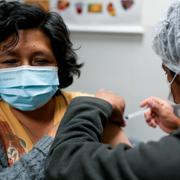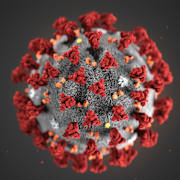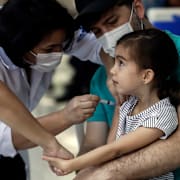
Studie: Långtidscovid ger håravfall och låg sexdrift
En ny studie från universitetet i brittiska Birmingham visar att långtidscovid kan ge en rad symptom som inte tidigare var kända – däribland håravfall, hallucinationer och minskad sexdrift, rapporterar The Guardian.
Enligt forskarna tyder studien på att långtidscovid kan ge upphov till en ”extremt stor” variation av symptom utöver luktbortfall, hjärntrötthet och andra vanliga problem.
– Denna forskning bekräftar vad patienter har sagt till vårdpersonal och politiker under hela pandemin, säger professor Shamil Haroon, huvudförfattare till studien.
Studien visar också att kvinnor, yngre och ickevita personer har högre risk för långtidscovid.
bakgrund
Långtidscovid
Wikipedia (en)
Long COVID or Long-haul COVID is a condition characterized by long-term consequences persisting or appearing after the typical convalescence period of COVID-19. It is also known as post-COVID-19 syndrome, post-COVID-19 condition, post-acute sequelae of COVID-19 (PASC), or chronic COVID syndrome (CCS). Long COVID can affect nearly every organ system, with sequelae including respiratory system disorders, nervous system and neurocognitive disorders, mental health disorders, metabolic disorders, cardiovascular disorders, gastrointestinal disorders, musculoskeletal pain, and anemia. A wide range of symptoms are commonly reported, including fatigue, malaise, headaches, shortness of breath, anosmia (loss of smell), parosmia (distorted smell), muscle weakness, low fever and cognitive dysfunction.The exact nature of symptoms and the number of people who experience long-term symptoms are unknown; these vary according to the definition used, the population being studied, and the time period used in the study. A survey by the UK Office for National Statistics estimated that about 14% of people who tested positive for SARS-CoV-2 experienced one or more symptoms for longer than three months. A study from the University of Oxford of 273,618 survivors of COVID-19, mainly from the United States, showed that about 37% experienced one or more symptoms between three and six months after diagnosis.While studies into various aspects of long COVID are under way, as of November 2021, the definition of the illness is still unclear, as is its mechanism. Health systems in some countries and jurisdictions have been mobilized to deal with this group of patients by creating specialized clinics and providing advice. Overall, however, it is considered by default to be a diagnosis of exclusion.A review suggests that global prevalence of long COVID conditions after infection could be as high as 43%, with the most common symptoms being fatigue and memory problems.
Omni är politiskt obundna och oberoende. Vi strävar efter att ge fler perspektiv på nyheterna. Har du frågor eller synpunkter kring vår rapportering? Kontakta redaktionen



